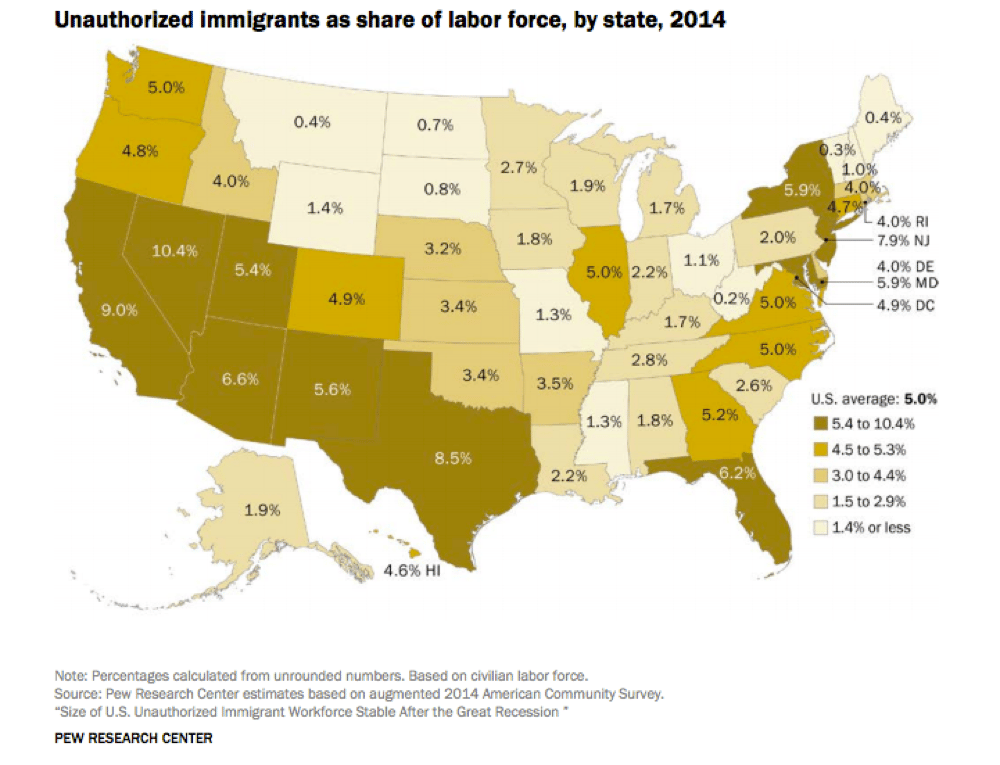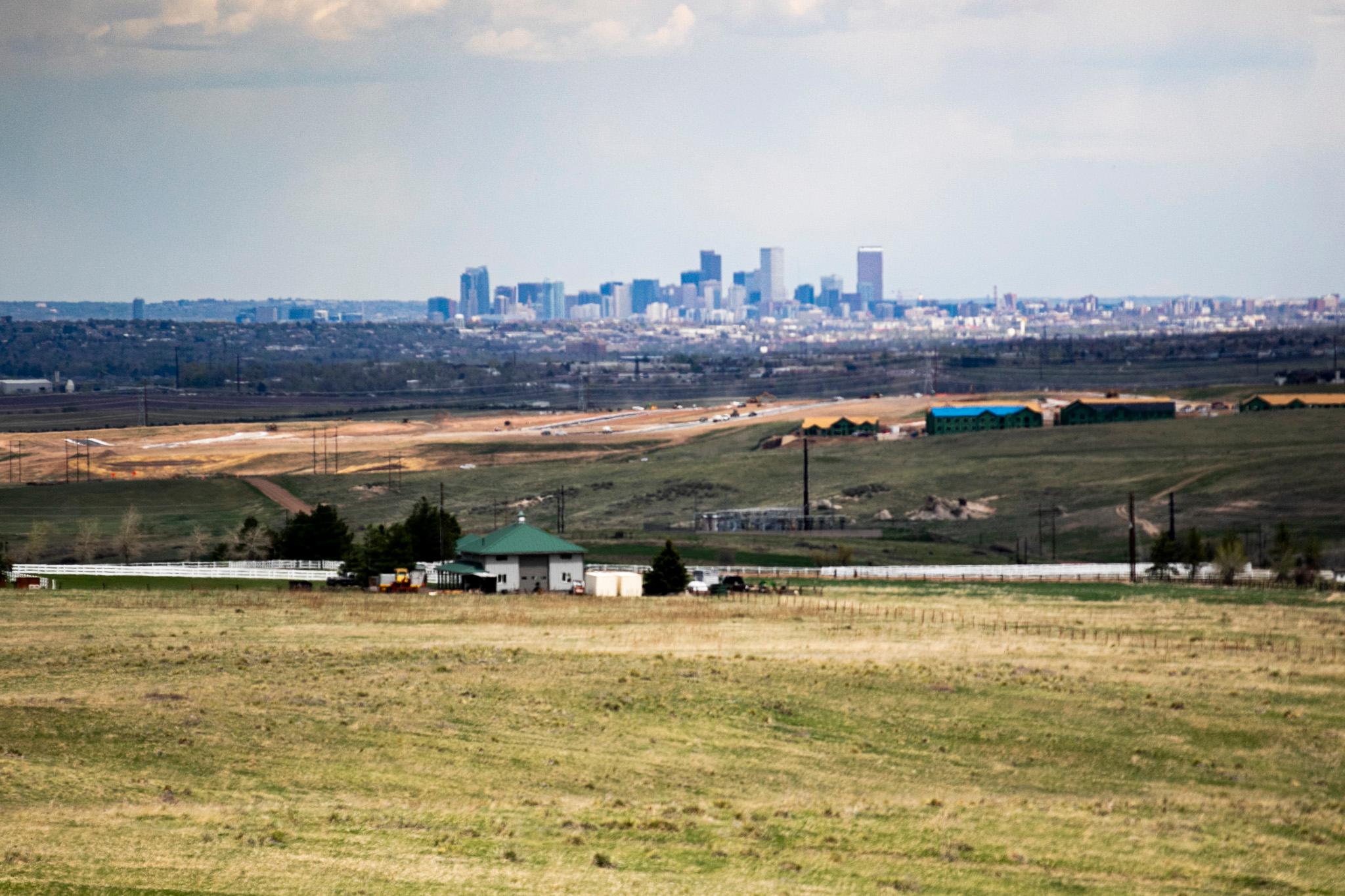
About 130,000 people are living without legal immigration status in the metropolitan area that includes Denver, Aurora and Lakewood, according to Pew Research Center. That's the 17th highest in the country, the new study found, while the metro's total population is 19th highest.
Colorado is in one of several regions in the U.S. where undocumented immigrant populations have grown significantly in recent decades, according to Jeffrey Passel, senior demographer for Pew. Economic growth in the Southeast, Midwest, Mid-Atlantic and Mountain West has drawn people with and without legal documents to cities like Denver since the 1990s.
"As communities developed, the new unauthorized immigrants kind of skipped going to Southern California and went straight to Georgia -- and I think Denver fits right into that pattern," Passel said.

The number of undocumented immigrants coming into the U.S. grew rapidly through the 1990s to 2007, Passel said, at about a half-million per year. Following the economic recession, the undocumented population shrank from about 12 million to roughly 11 million and now is largely stable.
The boom left Colorado as a state with a higher-than-average percentage of undocumented immigrants, according to an earlier Pew study. They also make up a sizable share of the workforce -- 4.9 percent –– and tend to be overrepresented in agriculture, hospitality and construction, all major industries here.
"It’s been true for the history of the U.S. that the immigrants have tended to go where they get jobs and where they know people, where there are immigrant communities that can help them settle in," Passel said.
Pew also examined undocumented populations in a few individual cities, including Denver.
By that measure, Denver's undocumented population of 55,000 outweighed a few cities' that are significantly larger, such as Boston and San Francisco, both with 35,000 people, along with Washington, D.C. and Seattle, as the Denver Post pointed out.
There are some important caveats to that comparison though, because it's a function of both economics and immigration patterns.
The cost of living in each of those larger cities is higher than in Denver, while people arriving without authorization are relatively poor, making barely half of the national median income for families.
As a result, undocumented immigrants may be more likely to live in the outlying suburban areas of a metro than the city itself, and that effect may be magnified in the larger, more expensive coastal cities. While the Pew data shows D.C. itself has only 25,000 undocumented immigrants, the greater D.C. metro counts 400,000 undocumented people.
"A lot of the jobs they work in are in the suburban counties -- the kinds of service jobs and construction -- are more prevalent in the suburbs than they are in the District," Passel said. "I suspect there’s some similar things going on in San Francisco and in Boston."

A large portion of Denver's immigrants arrive without authorization.
In all, about 37 percent of the Denver metro's foreign-born population lack legal immigration status, the new study found, compared to about 24 percent for the national average.
That percentage is significantly higher than you would find in, say, San Francisco and New York, but it's close in line with what you find in the Dallas metro (37 percent of all foreign-born), Salt Lake City (39 percent) and Oklahoma City (42 percent).
This may be because southern and central states are closer to the U.S.-Mexico border and, again, have more of the agricultural jobs that attract migrant workers.
"To some degree, it’s a function of what share of the immigrants in those communities are from Mexico and Central America," Passel said.
A bit about who undocumented immigrants are:
They tend to live in traditional family units, and Pew found that about 52 percent are from Mexico. "A majority of the adult men and 80 percent of the adult women are in families -- husband, wife, and a lot of them have kids," Passel said. Almost half have children who were born in the U.S., he said.
Denverite previously interviewed seven young, undocumented immigrants in the Denver area. Learn about their lives. We've also been following the story of Ingrid Latorre, an undocumented mother taking sanctuary in a church.
What this means politically:
These findings highlight that Denver and Colorado governments will be in the hot seat if the federal government moves more aggressively toward deportations and other enforcement action.
Denver Mayor Michael Hancock already has heard calls for more action by immigrant advocates, and the city does have policies in place that to some degree protect undocumented immigrants, or at least keep city authorities from assisting in their deportation.
By the way: At first glance, there's little indication from this data that Denver's sanctuary policies attract significantly more undocumented immigrants. Boston, similarly to Denver, does not detain people based on their immigration status, and yet its undocumented population is smaller than Denver's. San Francisco, meanwhile, is actually suing the feds over Trump's threats to take money from sanctuary cities.
This Saturday at noon, Hancock will speak and address concerns at a forum on immigration and refugees at Place Bridge Academy. Find the Facebook event page here.










